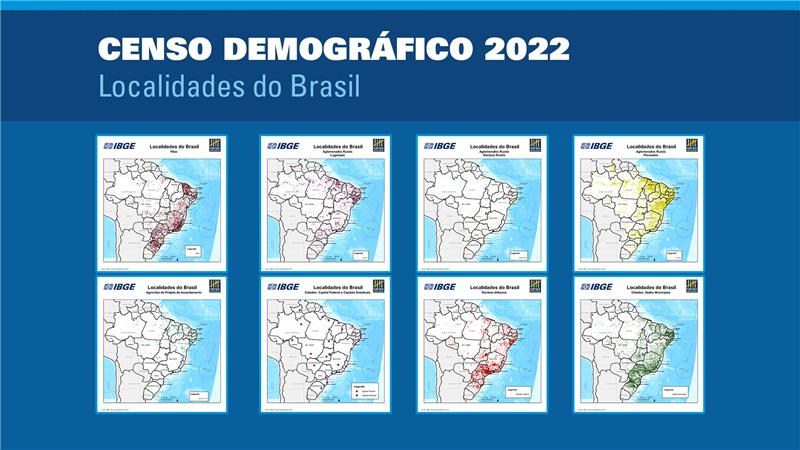PNAD Contínua
Unemployment drops to 11.2% in quarter ended February
March 31, 2022 09h00 AM | Last Updated: April 03, 2022 02h01 AM

The unemployment rate fell to 11.2% in the quarter ended February, with a change of 0.4 percentage points in comparison with the previous quarter (11.6%). That is the lowest rate for a quarter ended February since 2016. Now the country has a total of 12 million unemployed persons. In comparison with the last quarter, the number of persons looking for a job fell by 3.1%. Data come from the Continuous National Household Sample Survey (Continuous Pnad), released today (31) by the IBGE.
According to the IBGE’s Labor and Income coordinator, Adriana Beringuy, retraction in the unemployment rate reflects the trend to decrease observed in the last three quarters. “In the quarter ended February, the population searching for work decreased, as in preceding months. The difference is that in this quarter there was no significant increase of the employed population.”
In the quarter ended February, the number of employed persons was estimated at 95.2 million and was stable in terms of employment status, percentage of persons at working age who were employed in the week of reference of the survey (55.2%).
According to the researcher, stability of the total employed persons seems to be getting back to a pre-pandemic level: in the quarters ended February, there has been, historically, a decrease in this population. One of the possible reasons is the dismissal of workers who, in the end of the previous year, had been hired on a temporary basis. “If we look at the time series, we will see that, since the beginning, there has been a decrease in the number of employed persons in the period. Now we have not observed decrease, but reduction this year may indicate the resumption of those seasonal patterns.”
One of the increasing categories, workers with a formal contract in the private sector increased 1.1% from the previous quarter, a total 371 thousand persons. There was also an increase of 5.2% (by 203 thousand persons) among the employers.
Considering the number of self-employed workers, there was a decrease of 1.9% in comparison with the quarter ended November. That represents a decrease by 488 thousand persons. “This decrease was widely disseminated among the activities, such as, for example, trade, construction and lodging and feeding. Since this group represents a significant part of informal workers, there was a direct effect on informal work in the sector,” Ms. Beringuy explains.
With this decrease, informal professionals amounted to 38.3 million, whereas they were 38.6 million in the previous quarter. Also recording decrease, informality rate went from 40.6% to 40.2% in this period. This category gathers workers without a formal contract, employers and self-employed workers without a CNPJ register and contributing family workers.
Both the number of domestic worker, estimated at 5.7 million persons, and that of workers in the public sector, with 11.3 million persons, remained stable in the quarter ended February.
On the other hand, the number of persons out of the workforce increased 0.7% from the previous quarter. This increase by 481 thousand persons resulted in a total 65.3 million. The coordinator explains that this increase used to take place in the quarters ended February of years preceding the pandemic and that the result may indicate a return to that pattern.
In the potential workforce, group that gathers persons who were not employed nor looking for a job, but who had a potential to get one, there was a decrease by 510 thousand persons (-5.6%). A sub-group of the potential workforce, discouraged persons were estimated at 4.7 million, which means stability in relation to the previous quarter.
Among the activities surveyed, only Other services (4.0% of 189 thousand persons) recorded increase. “The increase reflects the expansion of personal services rendere to families, which includes services in the fields of beauty and also recreational activities.” Among personal services rendered to families are hairdressers’ and manicurists, whereas recreational activities include artistic works.
In the sector of Construction, the number of workers decreased 3.5%, which means a drop of 3.5%, by 261 thousand persons. The other activities remained stable.
Stability in earnings
Average real earnings were estimated at R$2,511, recording stability against the previous quarter, but the lowest ever observed in a quarter ended February since the beginning of the time series, in 2012. “In preceding quarters, average earnings were on a downward trend. Stability in the quarter may be related to the decrease in the number of informal workers, and to the increase of workers with a formal contract in the private sector. ”
The wage bill was also stable in comparison with the quarter ended November. It was estimated at R$234.1 billion.
More about the survey
The Continuous PNAD is the main instrument to monitor workforce in Brazil. The survey sample per quarter corresponds to 211 thousand households surveyed in Brazil. Nearly two thousand interviewers work in the survey in 26 states and in the Federal District, integrated to the data collection network of more than 500 IBGE branches.
Due to the Covid-19 pandemic, the IBGE implemented data collection by telephone on March 17, 2020. The id of the interviewers can be confirmed at the Answering the IBGE website or through the Call Center (0800 7218181) by checking their ID numbers, which can be requested by the informants.

















